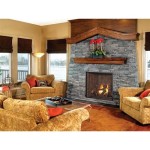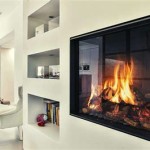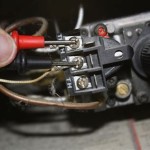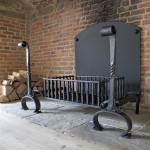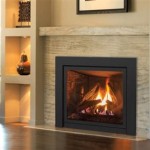Fire Starter Fireplace: Igniting Warmth and Efficiency
The fireplace, a traditional focal point of many homes, provides warmth, ambiance, and a comforting atmosphere. However, efficiently and reliably starting a fire can sometimes present a challenge. The success of a fire depends on several crucial factors, including the quality of the wood, sufficient airflow, and, most importantly, an effective fire starter. This article will explore the various types of fire starters available for fireplaces, their benefits, and factors to consider when selecting the most suitable option for individual needs and preferences.
A fire starter is a combustible material used to initiate a fire. It bridges the gap between a spark or flame and the larger pieces of wood intended to sustain the fire. Without a suitable fire starter, kindling may fail to ignite properly, or the process may be unnecessarily prolonged and frustrating. The choice of fire starter significantly impacts the ease, speed, and overall success of building a fire in a fireplace.
Types of Fire Starters
The market offers a diverse range of fire starters, each with its unique composition, advantages, and disadvantages. Understanding the characteristics of each type is crucial for selecting the most appropriate option for a specific fireplace and individual burning habits.
1. Natural Fire Starters: These fire starters are derived from natural, renewable resources. They are often preferred for their environmentally friendly properties and minimal chemical content.
* Wood Wool Fire Starters: Constructed from strands of wood fibers soaked in wax, typically paraffin or soy wax, wood wool fire starters are highly effective and relatively inexpensive. They burn with a strong, consistent flame and are easy to ignite with a match or lighter. They are a popular choice due to their affordability and ease of use.
* Fatwood: Also known as pine knot, fatwood is resin-impregnated wood harvested from pine trees. The high resin content makes it naturally flammable, even when slightly damp. Fatwood produces a strong, hot flame and emits a pleasant pine scent. It's a completely natural option, often favored for its sustainable sourcing and impressive performance.
* Dried Pine Cones: Pine cones, especially those coated in wax, can serve as effective fire starters. They burn relatively slowly and provide ample time for kindling to catch fire. They are a readily available and often free option, particularly in areas with abundant pine trees.
* Cotton Balls with Petroleum Jelly: A simple and cost-effective DIY fire starter can be made by coating cotton balls with petroleum jelly. The petroleum jelly acts as a fuel source, allowing the cotton to burn for an extended period. This is a particularly useful option for camping or situations where commercially produced fire starters are unavailable.
2. Manufactured Fire Starters: These fire starters are produced from various materials, often incorporating chemical compounds to enhance their flammability and burning duration.
* Wax-Based Fire Starter Cubes: These cubes typically consist of a blend of wax and combustible materials like sawdust or recycled paper. They are designed to burn cleanly and consistently, providing a reliable flame for igniting kindling. They are often individually wrapped, making them convenient and mess-free to use.
* Fire Starter Sticks: Similar to wax-based cubes, fire starter sticks are often made from compressed sawdust or recycled paper impregnated with wax or flammable oils. They offer a longer burn time compared to cubes and are well-suited for larger fireplaces or wood stoves.
* Gel Fire Starters: Gel fire starters consist of a flammable gel, typically containing alcohol or petroleum distillates. They are easy to apply and ignite, producing a strong, consistent flame. However, some gel fire starters may emit fumes or odors that some find unpleasant.
* Paraffin Wax Fire Starters: These fire starters often combine paraffin wax with sawdust or other combustible materials. They are typically inexpensive and readily available, providing a reliable flame for initiating a fire. However, burning paraffin can release soot and other pollutants, making them a less environmentally friendly option compared to natural fire starters.
3. Liquid Fire Starters: Liquid fire starters, such as kerosene or lighter fluid, possess a higher risk and are generally discouraged for fireplace use. They can be dangerous if not handled carefully and can produce explosive vapors. Their use also often results in unpleasant odors and the potential contamination of the fireplace and surrounding area.
4. Electric Fire Starters: These utilize electricity to generate heat, which then ignites the kindling. They are clean, efficient, and eliminate the need for traditional fire starters. Electric fire starters offer a push-button start and often include safety features like automatic shut-off.
Key Considerations When Choosing a Fire Starter
Selecting the right fire starter involves considering several factors to ensure optimal performance, safety, and environmental impact. Evaluating these aspects is crucial to making an informed decision.
1. Ease of Use: The ease of use is a primary consideration. Fire starters should be simple to ignite and handle, particularly for individuals with limited experience building fires. Options like wood wool fire starters, wax-based cubes, and electric fire starters are generally user-friendly.
2. Burn Time: The burn time of a fire starter should be sufficient to ignite kindling and establish a sustainable flame. Fire starter sticks and fatwood offer longer burn times, making them suitable for larger fireplaces or damp wood. Short burn times could lead to repeated attempts to ignite the fire.
3. Environmental Impact: The environmental impact of a fire starter is an increasingly important factor. Natural fire starters, such as wood wool and fatwood, are renewable and biodegradable, making them environmentally friendly choices. Avoiding petroleum-based starters reduces the emission of harmful pollutants. Considering the source and manufacturing processes is crucial when evaluating the overall environmental impact.
4. Safety: Safety is paramount when handling any flammable material. Fire starters should be stored in a cool, dry place, away from open flames and heat sources. Adhering to the manufacturer's instructions and exercising caution during use are essential for preventing accidents. Liquid fire starters should be avoided due to their inherent risks.
5. Cost: The cost of fire starters can vary significantly. Wood wool and wax-based cubes are generally more affordable, while fatwood and electric fire starters may be more expensive. Balancing cost with performance and environmental considerations is important in making a practical decision.
6. Odor: Some fire starters may emit unpleasant odors when burning. Natural fire starters, such as fatwood, often have a pleasant smell, while some manufactured fire starters may produce chemical odors. Choosing options with minimal or pleasant odors can enhance the overall fireplace experience.
7. Storage: The ease of storage should also be taken into consideration. Some fire starters are individually wrapped, making them easy to store and reducing the risk of spills or messes. Bulkier options may require more storage space and careful handling.
Proper Fireplace Preparation for Optimal Fire Starting
Effective fire starting also depends on proper fireplace preparation. A clean and well-maintained fireplace ensures optimal airflow and efficient combustion. Removing ashes regularly prevents them from obstructing the air supply and hindering the fire's progress. Inspecting the chimney for obstructions or creosote buildup is essential for safety and proper ventilation. Well-seasoned firewood, with a moisture content below 20%, is crucial for easy ignition and efficient burning. Using a combination of small kindling, progressively larger pieces of wood, and an effective fire starter will result in a reliable and long-lasting fire.
In summary, the selection of the appropriate fire starter is crucial for achieving a reliable and efficient fireplace experience. By considering factors such as ease of use, burn time, environmental impact, safety, cost, odor, and storage, users can make informed decisions tailored to their individual needs and priorities. Coupled with proper fireplace preparation and the use of well-seasoned firewood, the chosen fire starter will facilitate the easy and enjoyable creation of a warm and inviting fire.

How To Make Homemade Fire Starters That Smell Amazing

65 Pcs Fire Starter Natural Starters For Fireplace Pellet Stove Wood

Fireflame Quick Instant Fire Starter 100 Waterproof All Purpose Indoor Outdoor Firestarter For Charcoal Campfire Fireplace Bbq Odorless And Non Toxic 60 Pouches In Canister Com

How To Make A Fireplace Campfire Starter Vitacost Blog

Fireflame Quick Instant Fire Starter 100 Waterproof All Purpose Indoor Outdoor Firestarter For Charcoal Campfire Fireplace Firepit Smoker Odorless And Non Toxic 20 Pouches In Bag Com

Chimney Starter Wikipedia

Pinecone Fire Starters Diy Stonegable

Break And Burn Fire Starter Squares 144 Count Woodland Direct

Wisauto 100 Natural Fire Starter Wood Firelighter Wool Fuel For Fireplace Campfire Stove Charcoal Grill Bbq Smoker 50pcs Yahoo Ping

Triple Recycled Fire Starter Egg Carton Reclaimed Wood Shavings Wax Sustainable Camping Gift Woodstove Fireplace

